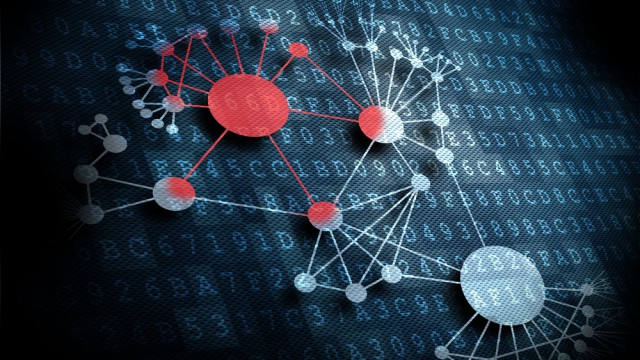What Is Malware and How It Spreads

What is malware and how it spreads is a fundamental concept in the cybersecurity world. Understanding it is not just for IT professionals but for anyone using the internet. Malware is short for “malicious software,” and it refers to any software designed to harm, exploit, or illegally access a computer system, device, or network.
In the digital age, malware has evolved into one of the most powerful weapons in the hands of hackers. It steals data, disrupts services, and spreads rapidly across networks. Whether you’re an individual user or a business owner, knowing what is malware and how it spreads is the first step to protecting your digital environment.
To dive deeper into identifying, preventing, and defending against malware attacks, consider enrolling in the CyberShield Mastery Course. This comprehensive training equips you with practical tools and insights to secure systems in real-world environments.
What Is Malware?
Malware is any type of software intentionally designed to cause damage. It comes in many forms—each with specific functions—but the goal is always to gain unauthorized access, extract data, or cause disruption.
The most common types of malware include:
- Viruses: Programs that attach themselves to legitimate files and replicate.
- Worms: Self-replicating software that spreads without user interaction.
- Trojans: Disguised as harmless software but designed to exploit.
- Ransomware: Encrypts user data and demands payment to restore it.
- Spyware: Secretly monitors user activity and sends information to attackers.
- Adware: Delivers unwanted ads and collects user behavior data.
To learn about other modern threats, read Top Cyber Threats You Must Know.
How Malware Spreads
Understanding what is malware and how it spreads requires knowing the techniques attackers use to distribute malicious code. Here’s how malware infects devices and networks:
1. Phishing Emails
This is the most common method. Hackers send emails that appear to be from legitimate sources. These emails contain links or attachments that, once clicked or downloaded, execute malware.
Learn how to spot these traps in Phishing Attacks: How to Avoid Them.
2. Infected Software Downloads
Downloading software from unreliable sources often includes hidden malware. This is especially common with pirated applications or unofficial websites.
3. Malvertising
This is malware hidden in ads. Even visiting a trusted website that displays malicious ads can expose your device to infection.
4. USB Drives and Physical Media
Attackers may load malware onto USB drives. Once connected to a computer, the malware installs automatically if protections are weak.
5. Fake Updates or System Prompts
Sometimes users are tricked into clicking fake pop-ups or browser alerts. These “updates” often install malware directly onto the system.
6. Compromised Websites
Visiting an infected website can cause a “drive-by download”—malware that installs without your permission or awareness.
For more insights on digital protection, see How to Protect Your Personal Data Online.
Signs of Malware Infection
Knowing what is malware and how it spreads isn’t enough—you must also recognize when a system is infected.
Watch for:
- Sluggish performance or system crashes
- Frequent pop-up ads
- Unusual network activity
- Files disappearing or being encrypted
- Programs launching or closing on their own
- New icons or browser toolbars
These symptoms may indicate the presence of malware, ransomware, or spyware.
How to Protect Yourself from Malware
Here are essential steps to defend against malware and limit its spread:
1. Use Antivirus and Antimalware Software
Install reputable protection tools and keep them updated. They scan for known malware signatures and remove them.
2. Enable Firewalls
Use both system and network firewalls. Learn more in What Is a Firewall and How Does It Work?.
3. Avoid Unverified Downloads
Always download apps and files from official sources. Check digital signatures and reviews if you’re unsure.
4. Don’t Click on Suspicious Links
If an email or message looks unusual—even from a known contact—don’t click it. Phishing attacks are increasingly sophisticated.
5. Update Software Regularly
Security patches often fix vulnerabilities that malware can exploit. Enable automatic updates for your operating system and software.
Stay safe by reviewing Cybersecurity Tips for Beginners.
Malware Prevention in Business Environments
Businesses have more at stake. A malware infection can:
- Disrupt operations
- Damage customer trust
- Result in financial and legal consequences
Here’s how organizations can prevent malware:
- Employee training on phishing and safe browsing
- Network segmentation to isolate infections
- Endpoint protection and monitoring
- Routine data backups (see How to Backup Your WordPress Website)
- Regular security audits
The CyberShield Mastery Course includes enterprise-level tools and techniques for malware detection, prevention, and response.
Career Opportunities in Malware Defense
If you understand what is malware and how it spreads, you’re ready to enter cybersecurity roles focused on threat defense.
Popular career paths include:
- Malware Analyst
- Security Operations Center (SOC) Analyst
- Threat Intelligence Researcher
- Incident Responder
- Cybersecurity Consultant
Learn about industry-recognized certifications in Top Certifications in Cybersecurity.
Build Malware Protection Skills with CyberShield
Knowing what is malware and how it spreads is just the beginning. In the CyberShield Mastery course, you’ll:
- Analyze real malware samples
- Build malware detection scripts
- Learn sandboxing and reverse engineering basics
- Secure systems from Trojan, ransomware, and worm infections
- Implement endpoint defense solutions in real time
Each module includes interactive labs, making it perfect for beginners and intermediate learners.


 Subscription
Subscription Performance Subscription
Performance Subscription Premium Subscription
Premium Subscription Base Subscription
Base Subscription Furniture
Furniture Bed
Bed Kitchen
Kitchen Almirah and Wardrobe
Almirah and Wardrobe LCD Cabinet
LCD Cabinet Verified Partner
Verified Partner Earn Money
Earn Money

 AI & Data Science
AI & Data Science Business & Startup
Business & Startup Cybersecurity & Cloud
Cybersecurity & Cloud E-commerce & Sales
E-commerce & Sales Marketing & Growth
Marketing & Growth Web/App Development
Web/App Development